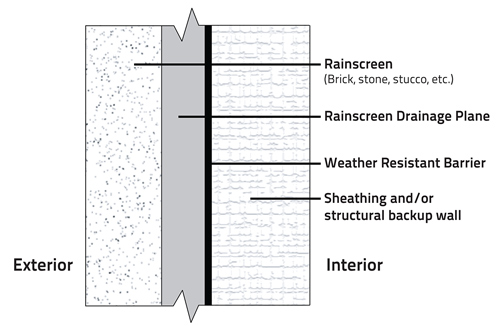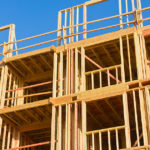 On British Columbia’s west coast, rainscreened buildings have become the norm over the past 20 years. Builders have installed thousands of them, after they became mandatory in the building code in the late 1990s. In other parts of North America, this type of sealed building envelope may still seem new and unproven, but if you dig a little deeper you’ll find rainscreens have actually been around for a very long time.
On British Columbia’s west coast, rainscreened buildings have become the norm over the past 20 years. Builders have installed thousands of them, after they became mandatory in the building code in the late 1990s. In other parts of North America, this type of sealed building envelope may still seem new and unproven, but if you dig a little deeper you’ll find rainscreens have actually been around for a very long time.
Norwegians are generally credited with developing some of the earliest rainscreen concepts. Open jointed barn technique dates back hundreds of years and involved the use of raw wooden siding that joined at the sides, with small openings at the top and bottom. It was used to cover stone or brick, and would prevent water from being absorbed by the porous materials underneath. It effectively allowed any water that got behind the siding, to drain out or evaporate.
Moving forward to the 20th century, the modern rainscreen idea began to be studied for its scientific merits in the 1940s. In the early ‘50s Pittsburgh’s Alcoa Building (now known as Regional Enterprise Tower) took advantage of a rainscreen created by its aluminum siding. Heading into the 1960s several key studies were completed in both Norway, and Canada, clearly demonstrating the advantages of providing a drained and ventilated space behind the siding on a building. The screens proved to be a great defence against moisture issues like rot and mold, but the market for them remained slow.
Finally, in the late 1980s, more significant architects started to incorporate rainscreens in their projects. The Ircam in Paris was designed as a musical research institute by Pritzker Prize winning architect Renzo Piano. He used the rainscreen concept to help keep water out, and the edgy building drew international attention. Piano would go on to be recognized as one of Time Magazine’s most influential people in 2006.
From there, uptake has built steadily. Builders in wet climates, where walls aren’t able to dry for long periods, were some of the first to really push the technology forward. In the damp winter testing grounds of coastal British Columbia, Canadians have shown the difference rainscreens can make over the last two decades. B.C. has become a hotbed for the rainscreen industry, and its offshoots, including businesses designing rainscreen compatible building materials.
For builders in the rest of North America, choosing a rainscreen is worth it if only for the peace of mind it can provide both you and your clients. Reliability is important for any brand in almost any industry, and as a builder it’s paramount. Rainscreens have a lengthy track record of making builders look good, and that record speaks for itself.


